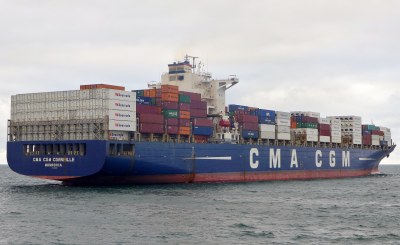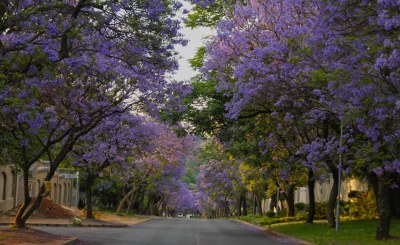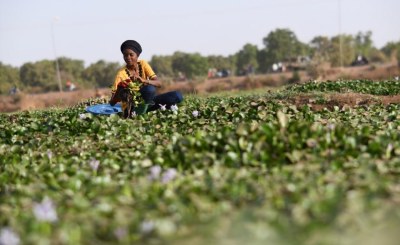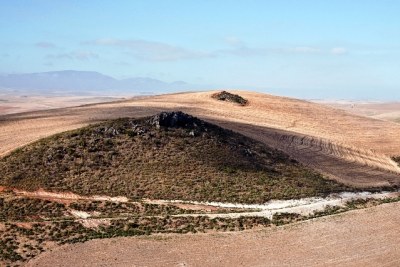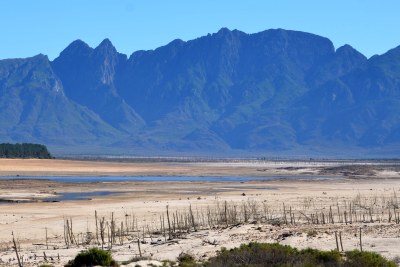-
South Africa: Clearing Alien Trees Can Help Reduce Climate Change Impact On Cape Town's Water Supply
The Conversation Africa, 14 March 2022
Droughts in water scarce regions are being aggravated by human-driven climate change. While rainfall reduction is the main driver, increased temperature and evaporation can also… Read more »
-
South Africa: SA Marks World Wetlands Day
SAnews.gov.za, 2 February 2022
As the world marks World Wetlands Day 2022, South Africa is celebrating the declaration of its 28th wetland of international importance. Read more »
-
South Africa: How We Found a Way to Track Alien Marine Species Along South Africa's Coast #AfricaClimateCrisis
The Conversation Africa, 1 December 2021
Saldanha Bay harbour on the west coast of South Africa has long been an important point for global shipping routes. It was also the port of entry for an unwanted stow-away: the… Read more »
-
South Africa: Ecoactivists Spearhead Mistbelt Biodiversity Drive While Pietermaritzburg Battles to See the Forest for the Alien Trees
Daily Maverick, 2 September 2021
Ferncliffe Nature Reserve will soon be restored to its natural state thanks to the efforts of an eco-couple who are passionate about removing alien species. Read more »
-
South Africa: Jacarandas Are Flowering Earlier - Why It's a Warning Sign
The Conversation Africa, 5 July 2021
In September each year, South Africa's Gauteng province turns purple. The cities of Johannesburg and Pretoria are well covered with trees - and jacarandas (Jacaranda mimosifolia),… Read more »
-
South Africa: Protecting Ecosystems Benefits Humanity
SAnews.gov.za, 7 June 2021
This decade will see concerted efforts to protect and revive ecosystems around the world for the benefit of humankind and nature, says Minister of Forestry, Fisheries and the… Read more »
-
South Africa: SA Sees Increase in Alien Species
SAnews.gov.za, 28 May 2021
The number of alien species that has been established in South Africa has increased by 15% from 1 637 to 1 880, about a third of which are invasive, says Minister of Forestry,… Read more »
Clearing Alien Trees Boosts Water Supply #AfricaClimateCrisis
Droughts in water scarce regions are being worsened by human-driven climate change. While rainfall reduction is the main driver, increased temperature and evaporation can also play a role, write a group of scientists in The Conversation.
One way of offsetting the impacts of climate change on water resources is catchment restoration, which can involve revegetation, wetland restoration, gully rehabilitation, and alien tree clearing. This is one of several types of nature-based solutions, which focus on reducing climate change impacts through working with nature.
In a recently published analysis, the scientists took a closer look at the role of climate change and catchment conditions during the 2015-2017 Cape Town "Day Zero" drought. This drought led to one of the most serious water crises experienced by any city in the world in recent times. The drought arose from a prolonged shortage of rainfall and, consequently, river flows, which progressively depleted reservoir storage in the area.
The scientists found that clearing alien trees before the drought hit could have reduced the impact of climate change on water supply during the "Day Zero" drought. But it could not have removed all of the human-driven climate change impact on water availability.
Day Zero refers to a period of severe water shortage in the Western Cape region, most notably affecting the City of Cape Town. While dam water levels had been declining since 2015, the Cape Town water crisis peaked during mid-2017 to mid-2018 when water levels hovered between 15 and 30 percent of total dam capacity.
In South Africa, invasive alien tree clearing is a well-known form of catchment restoration. These trees have spread across many mountain catchments critical for water supply. Alien trees use substantially more water than native vegetation because they are taller, have greater leaf areas, and have deeper root systems. These characteristics increase the amount of water lost due to transpiration from the tree, compared to native plants, leaving less water for river flow and groundwater recharge. Impacts from alien trees on water are felt especially during drought periods when water is most needed.
InFocus
-
Conservationists in South Africa have developed a new app that will help them to monitor South Africa's unique renosterveld landscapes using satellite images to detect when farmers ... Read more »
-
Forestry, Fisheries and Environment Minister, Barbara Creecy, has said that South Africa will not support a pledge signed by 40 nations and institutions to end coal financing by ... Read more »
-
Cape Town faces an 80% higher chance of another 'Day Zero' drought by the end of the century if greenhouse gas emissions keep rising at current rates, as the South African city ... Read more »
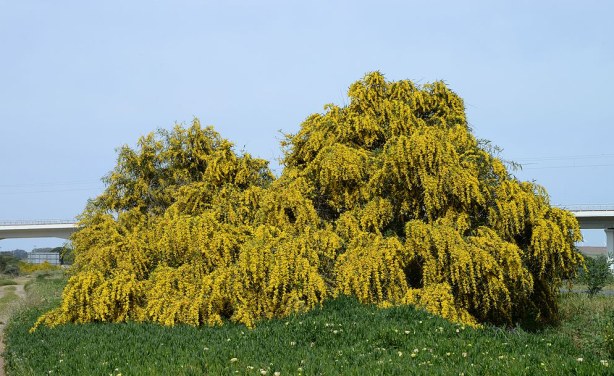
A Golden wreath wattle (Acacia sailgna), Australian flora considered alien vegetation in South Africa (file photo).

